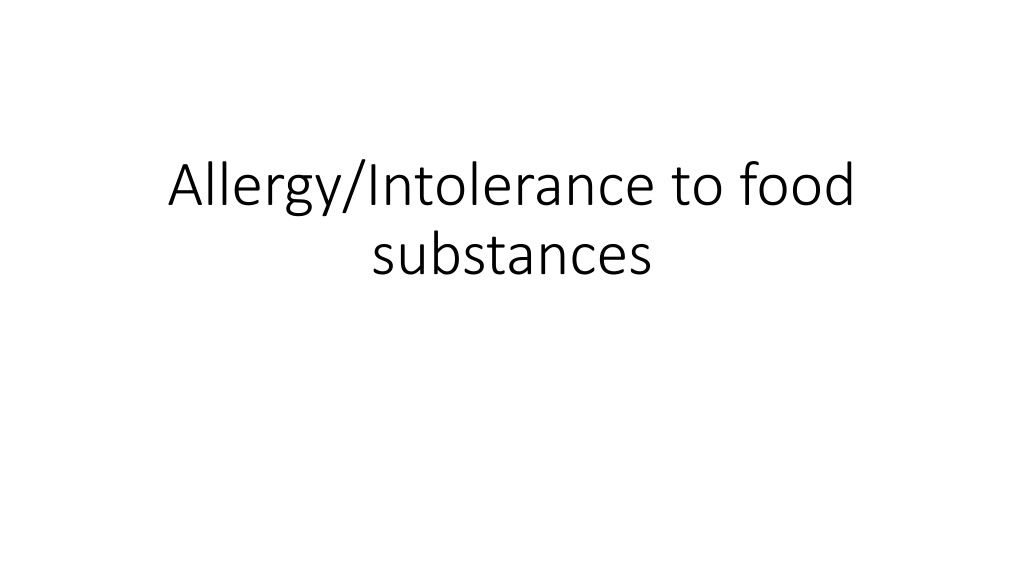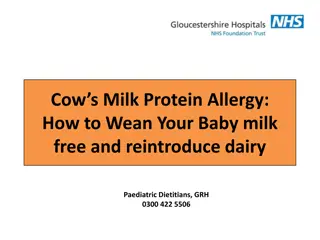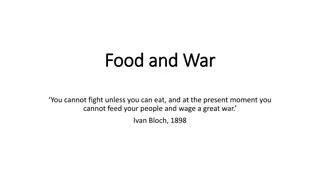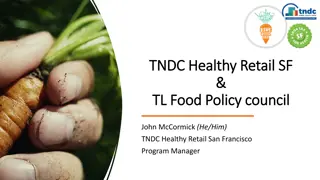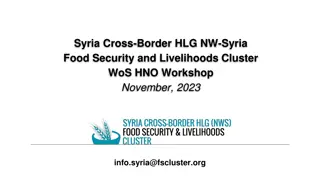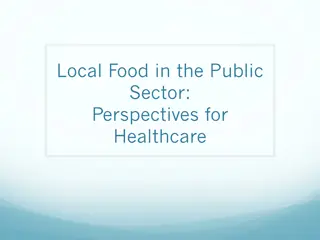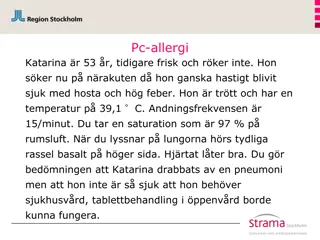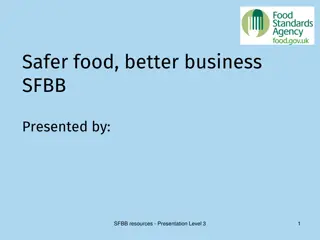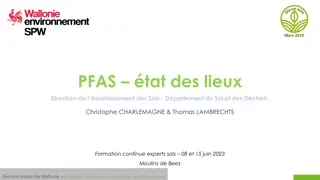Allergy/Intolerance to food substances
Discussion on recording allergies and intolerances to food substances, highlighting the complexity of reactions to combined food products and the need for clinical specificity. Exploration of challenges in classifying complex food allergens and the importance of editorial guidance for coverage in clinical data. Issues related to food concepts in SNOMED also addressed.
Download Presentation
Please find below an Image/Link to download the presentation.
The content on the website is provided AS IS for your information and personal use only. It may not be sold, licensed, or shared on other websites without obtaining consent from the author. Download presentation by click this link. If you encounter any issues during the download, it is possible that the publisher has removed the file from their server.
Presentation Transcript
Allergy/Intolerance to food substances
Allergy/Intolerance to food substances On a call with OHDSI (OBSERVATIONAL HEALTH DATA SCIENCES AND INFORMATICS) recently we discussed the "need" to record allergy and intolerances to foods. Examples given were things like "Allergy to mayonnaise", "Allergy to pizza", etc. To date we have tried to stay with specific substances vs. combined food products. Has the allergy CRG discussed these types of terms and what was the outcome? My impression is that we need to stay away from these types of general terms as they are not very clinically useful. Jim, this scenario has not been discussed but is perhaps similar to the discussion we have had regarding allergy to animals. For that case it was recognized that an allergy to an animal such as cat is really an allergy to a cat protein and thus animal x protein concepts were created and animal x allergy concepts were (to be) created as allergy to animal x protein (finding) with a PT of Allergy to animal x. For complex foods, containing many different food components this would be more difficult. Someone may indeed present with a history of a reaction after eating a food combination such as pizza but this would likely manifest as reactions to many foods that contain the same ingredients. It would behoove the physician seeing the patient to refer to an allergist for testing. For the pizza example this would include milk/cheese, tomato, wheat, etc. Reactions may also be pseudoallergies or intolerances to food additives. I would agree to stay away from this level of complexity.
Example of some complex food allergens found in FDB BUTTER CHEESE FORTIFIED WINE GIN GOATS MILK SOFT CHEESE ICE CREAM LAMB BURGER LIQUEUR PARMESAN CHEESE PIZZA ROOTBEER SCAMPI SOURED CREAM WINE
Allergy/Intolerance to food substances As discussed with OHDSI, it is a question of coverage. If these are actually important clinically, then we need some editorial guidance as to what level we would go with combined foods so we don't have to have everything anyone could eat (i.e intolerance to cheetos).
Allergy/Intolerance to food substances I agree that the combined food products are not useful for Allergy concepts. Would like to hear from Farzaneh and Toni as to what issues currently exist in SNOMED related to these types of foods. As I mentioned at the beginning, this inquiry as based on comments from OHDSI related to real world data they are getting.
Allergy/Intolerance to food substances From: Toni Morrison We identified that there are issues with the modeling of edible substances, foods, and dietary products as the concepts are scattered across the Substance and Pharmaceutical/biologic product hierarchies and don t really belong in either hierarchy. The high level grouper concepts are also not particularly clear. Examples of existing issues: There are concepts representing foods and types of foods in the Substance hierarchy with many comprised of >1 substance (like pizza). The Substance hierarchy includes concepts like Canned peas which are definitely products, not substances. There are concepts in the Pharmaceutical/biologic product Dietary product subhierarchy representing infant formulas, enteral formulas, and specialty foods (e.g. Gluten-free macaroni but plain Macaroni is in the Substance hierarchy). There is no place for relocation of these concepts at this time because there is no hierarchy for products that are not Pharmaceutical/biologic products (as we ve just discussed, Farzaneh and I will prepare this topic for a future EAG discussion). I agree that we don t want to create allergy to pizza or similar concepts in SNOMED CT.
